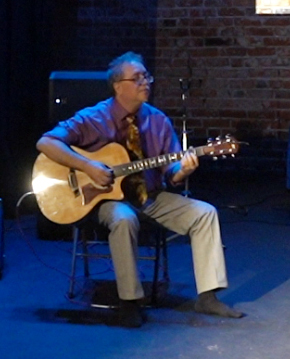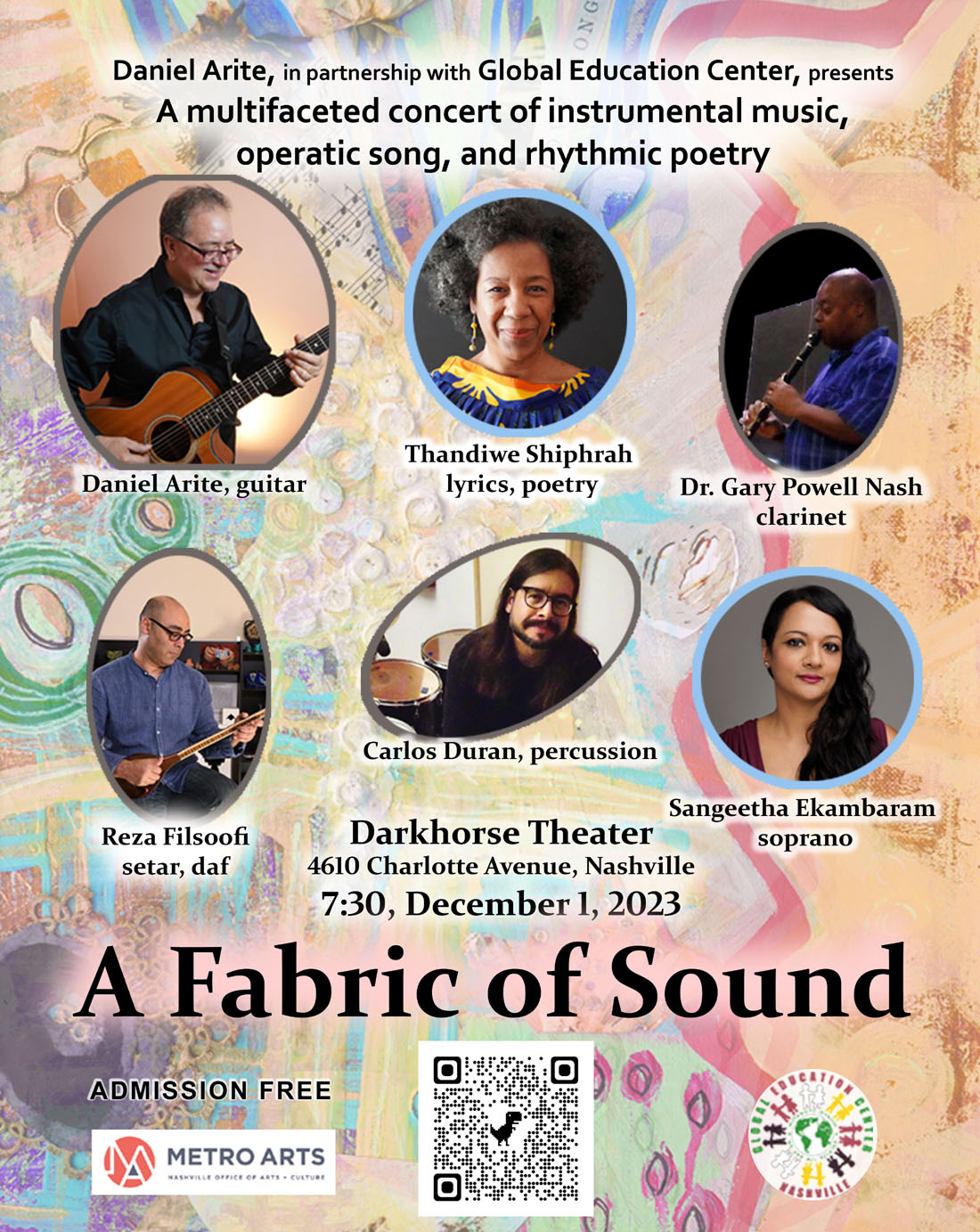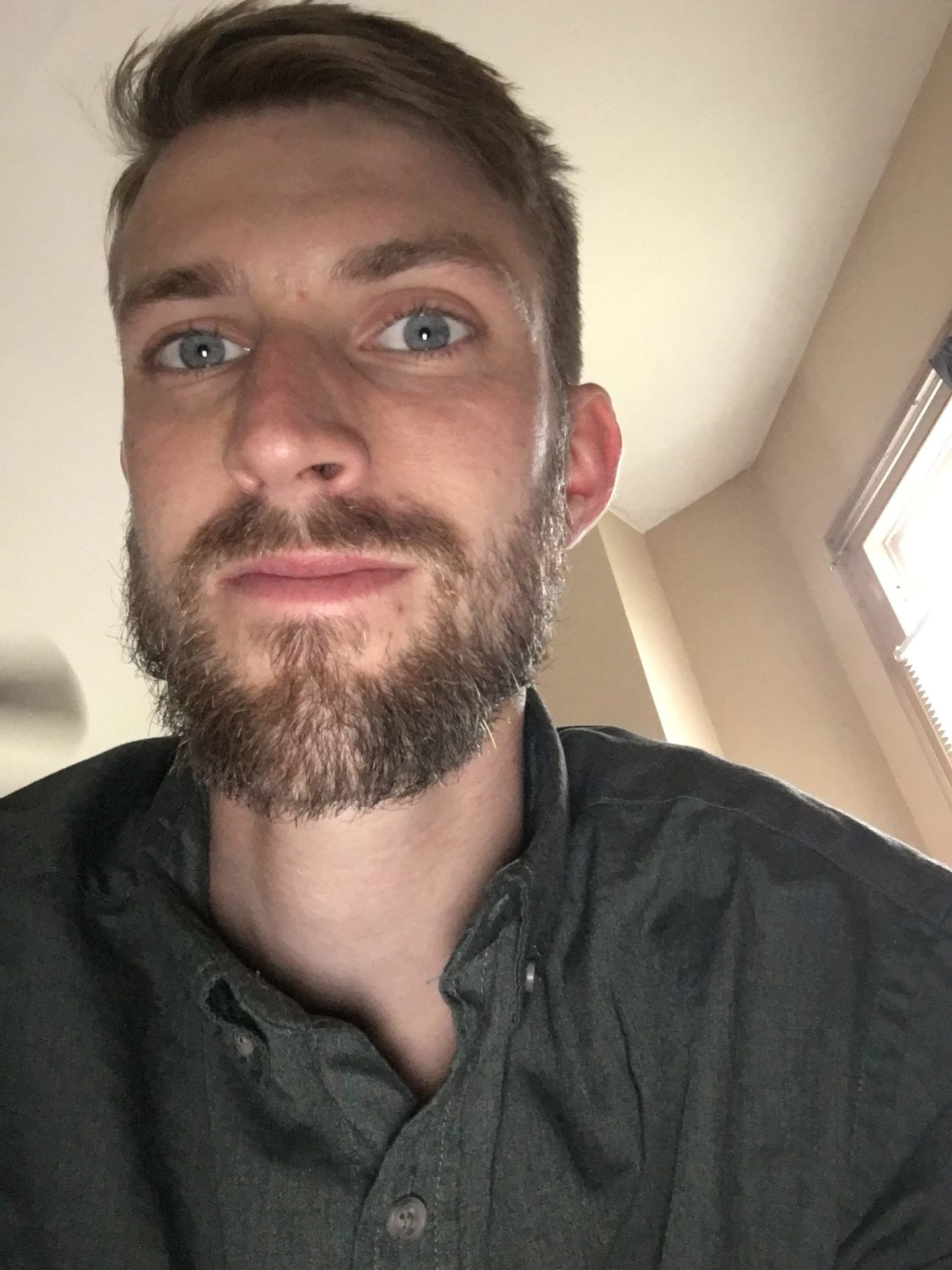At the Darkhorse Theater
A Fabric of Sound
A Fabric of Sound was presented in partnership with Global Education Center and was led by Daniel Arite. The event was held at the Darkhorse Theater located in West Nashville, an old church turned black box theater that provided enough open stage space to spread out the diverse cast of musicians.
The program was organized to feature the six artists separately and categorized as Sonic 1. I was interested in the way each performer made a space, a humble claim of the moment, to express themselves through their music. This showcase was a chance to perform and improvise individually before the finale, labeled Sonic 2, in which the artists performed a collaborative composition.
The first stitch was provided by Daniel Arite and his acoustic guitar. Shortly after his opening theme Thandiwe Shiphrah joined him on stage to recite a stirring poem by Paul Laurence Dunbar titled Invitation to Love. This duo has been performing together for a while now according to Arite, and they know exactly how to flow together. It was a great introduction to prepare the audience for the unique listening experience forthcoming.
Iranian setarist Reza Filsoofi gave us the most intimate performance while sitting cross-legged on a pouf under a single stage light. His delicate touch and droning improvisation on the setar evoked something ruminative in me, like a free flowing state of mind but one that was still fragile and momentary.
In contrast, Carlos Duran’s percussion solo pulsated with a more guided direction. I felt led away to another world sonically, from the start, by an instrument that was handcrafted and made up of plastic bottle tops of all sizes and colors. Duran then led the audience on an adventure that he was crafting in the moment which felt more direct than the other performances. He was excellent and focused and an exciting performer.
A Child is Born was performed by Dr Gary Powell Nash on solo clarinet. This piece was written by Thad Jones and once again appropriately fit the goal of the program by providing a range of melodic threads that swelled, sustained, and twisted throughout. This was the most familiar music to me, as far as a classical instrument in performance goes, and was played professionally by Nash.
Soprano Sangeetha Ekambaram performed The Whole Journey is Love: A Medley accompanied by Alessandra Volpi on piano. This medley was her own arrangement of songs that unfolds an emotional drama of love in different languages such as Spanish, French, Czech, Italian, and English. That incredible display of polyglotism was not even what impressed my party most. After interviewing each of them, I found they all agreed the performance was outstanding. Ekambaram’s technique and expressive delivery moved us, shocked us, and warmed us even though to be honest we could not understand the plot of the drama she was sharing. It ended with her own improvisations over slow harmonic movements from the piano. Reflecting on this medley, I’ve come to appreciate it on many levels and I’m thankful to have heard it. I believe Ekambaram had the most difficult task of using her instrument in a new, innovative way that breaks from tradition.
A bit of Take Five by Paul Desmond was in continuous use in Arite’s arrangement for guitar while Shiphrah performed spoken word to create what they introduced as “an audio collage.” Her works Word Rhythm Come and On Being a Perfect Number displayed her ability to confidently flow with the guitar beats while delivering dynamic lines that explored the musicality of language.
She was the thread throughout the evening that gave the show that extra something. I am not sure it’s tangible and I can’t recreate that feeling of energy she brought to the moment. She was a performer that blended in a unique way with an earthy, roots quality. You got the feeling she was a narrator in a way: her instrument was the only one using spoken language so it was familiar but incredibly fluid and sonically rich.
With the exposition of talent in the first part of the program finished, the artists all returned to the stage to deliver the collaborative composition followed by a Q & A session. The music started with a low whistle produced by swinging a plastic tube paired with dappled percussive rhythms on hand drums and cymbals. The first melodic strain was passed from guitar to clarinet and then synchronized while crescendoing along with the percussion. The light, tonal blend of instruments glimmered for a moment before Shiphrah’s spoken word took things in a very beat oriented direction. Her and Duran meshed well with a neat syncopated back and forth. Guitar, clarinet, and setar each played single line melodies accompanied by Duran’s handcrafted water percussion instrument which set up the entrance for the soprano voice. As all these instruments meshed, spoken word re-entered and the ensemble was finally fully involved. At the cue “I am one with the universe,” exclaimed by Shiphrah, the group swelled to the climactic section of the piece.
I really enjoyed the format and programming of the show and I felt it culminated neatly in the final performance. We learned that the ensemble was given a prompt by Arite and they then worked out the composition through a few rehearsals, eventually recording it. He said the goal of the piece was to “take you somewhere else” and that was the feeling that kept reoccurring for me; a bit of nostalgia. The show’s casual feel reminded me of friends getting together just to make and share art. Those experiences are always fun, meaningful, and inspiring. If those were the three things A Fabric of Sound impressed upon its audience, I am sure the artists were thrilled.



